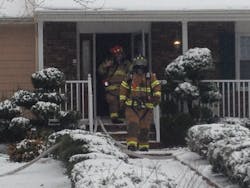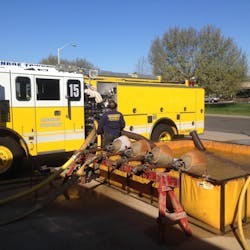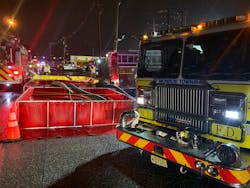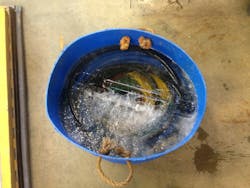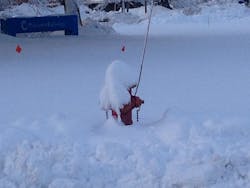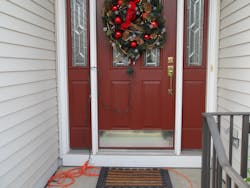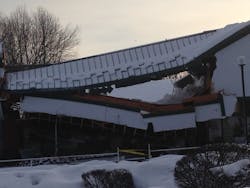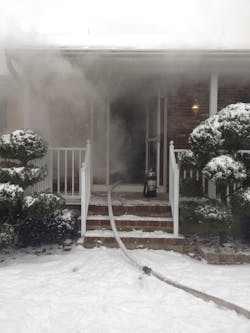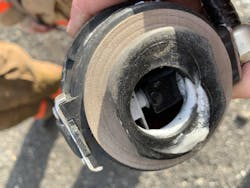Seasons Change: Preparing for Winter Operations on the Fireground
In the Northeast, where I reside and work, there is an adage that goes, “If you don’t like the weather, wait 20 minutes,” but it seems that extreme weather conditions are becoming more common in more places in the country. These conditions can take a toll on not only the members who operate on scene but on the equipment that’s used as well.
Each season brings its hardships and influences on operations. Preparations for cold weather can increase readiness for operations within these elements.
Cold weather can have a substantial effect on the devices and equipment that are utilized on the fireground. Therefore, a key component for on-scene success is the preventative maintenance program that’s utilized at the firehouse.
Maintenance on responding apparatus must be kept up to date, because cold weather can wreak havoc on vehicle components. For example, pumping apparatus must be kept in good order, to minimize leaks and component failure from expansion when water freezes as well as to maximize performance.
Fuels can become more difficult to deliver to the engine in the cold weather, because fuel can begin to “gel”— become more viscous—as temperatures drop below freezing. Furthermore, leaks in the fuel systems can lead to vacuum sources. That can result in air being drawn in instead of fuel, which causes the apparatus to run rough and to stall out. Add a poor maintenance program, where filters and components go extreme lengths of time between servicing, and this can spell disaster on the emergency scene.
Any equipment that’s fuel-powered should be serviced and prepared for cold-weather operations where applicable. Portable power units, fans, generators, saws and ancillary equipment should be serviced and tested regularly. Many departments utilize an equipment test schedule that calls for certain equipment to be started and tested on specific days of the week. Some departments have these requirements built into their day-to-day operations, where the initial apparatus check when the shift starts includes running all fuel-powered equipment to check for any issues.
Additives for fuels that are used in these devices should be utilized prior to the start of the cold-weather season to determine any mechanical issues with the equipment. Fuel-powered equipment also should be “run dry” regularly, so fuel that’s in the tank doesn’t start to degrade and damage fuel system components.
Compartments on apparatus must limit the introduction of water and snow, which could lead to damage to equipment that’s stored in them. This includes staff cars, brush units and trailers that might be utilized for specialized operations and technical rescue. The tools and equipment that are used on these operations can be quite expensive and can be damaged when exposed to extreme conditions.
Spare PPE, such as gloves and hoods, should be kept by each member on the apparatus as well. As the incident progresses, wet PPE can start to cause thermal injuries to firefighters. Having dry equipment to swap out on scene helps to keep firefighters safe.
As the sun sets for the day, roadways and streets can become slick with just a little bit of moisture, and they can freeze overnight, causing hazardous driving conditions en route to alarms. It’s advisable to stay tuned to the most up-to-date weather reports for your response area. There are many options for immediate weather conditions and advisories via personal phones and other devices.
Many times, as roads are cleared of snow and ice, large banks of accumulation are left on the sides of streets, covering hydrants and making them difficult to use. Many departments have enacted referendums that require homeowners to clear any hydrant that’s on their immediate property of snow, in a radius of four feet. However, it becomes tough to enforce this when the fire is occurring. Engine companies should be equipped with shovels and tools to clear hydrant areas when the situation arises, and it’s good policy for companies to inspect their first-due response areas for any buried hydrants prior to an incident.
The winter months bring not only colder weather but also bring the holiday season, during which many people enjoy decorating their homes and buildings in festive decorations and brilliant lights. Unfortunately, while the best of intentions usually is meant, that isn’t always the result, as some displays can lead to hazardous situations. Many incidents can be traced back to faulty displays or hazardous practices with electrical connections. When these are identified, it’s beneficial to everyone for department members to point out the condition and offer a suggestion that’s safer and still allows for celebrating the season.
Weather considerations are a critical part of the 13-point size-up that ICs use to formulate a strategy. Cold-weather operations tax not only the department personnel who operate on scene but the equipment that those firefighters use as well.
About the Author
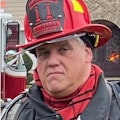
Michael Daley
MICHAEL DALEY, who is a Firehouse contributing editor, recently retired as a 37-year veteran who served as a captain and department training officer in Monroe Township, NJ. He is a staff instructor at multiple New Jersey fire academies and is an adjunct professor in the Fire Science Program at Middlesex County College. Daley is a nationally known instructor who has presented at multiple conferences, including Firehouse Expo and Firehouse World. His education includes accreditations as a Chief Training Officer and a Fire Investigator, and he completed the Craftsman Level of education with Project Kill the Flashover. Daley is a member of the Institution of Fire Engineers and a FEMA Instructor and Rescue Officer with NJ Urban Search and Rescue Task Force 1. He operates Fire Service Performance Concepts, which is a training and research firm that delivers and develops training courses in many fire service competencies.
